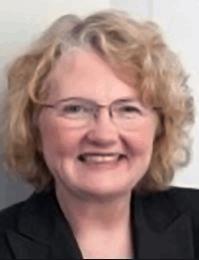How Poor Communication, Patient Recruitment Plague Clinical Trials

By Ed Miseta, Chief Editor, Clinical Leader

In speaking with clinical executives over the last few months, it’s clear that two issues continue to be a headache for those working in this space: patient recruitment and communication. While recruitment remains a problem that is not going away, new technologies, including social media, seem to offer a glimmer of hope to getting more patients involved in trials. At the same time, the problem of poor communication between sponsors, CROs, and sites is an issue still in need of novel solutions.
Mary Rose Keller, VP of clinical operations for Heron Therapeutics, has been involved with clinical trials for more than 30 years. She recently spoke to Clinical Leader about these recruitment and communication challenges, and where she sees the industry is headed.
Ed Miseta: Is social media having a significant impact on patient recruitment?
 Mary Rose Keller: What I see happening with social media right now is a monumental shift in the space. Its use in patient recruitment has taken off quickly, particularly in the last few months. Right now, all of our sites seem to want to embrace social media because they believe it is the best way to find patients in need of new therapies. This movement has been so significant; I now believe any patient recruitment organization still using old methods dependent on disease and pharmacy data bases will soon be out of business. Any effort a company uses has to attract patients, and right now, the primary social media platforms performing patient recruitment include Twitter, Facebook, Google Ads, and Instagram.
Mary Rose Keller: What I see happening with social media right now is a monumental shift in the space. Its use in patient recruitment has taken off quickly, particularly in the last few months. Right now, all of our sites seem to want to embrace social media because they believe it is the best way to find patients in need of new therapies. This movement has been so significant; I now believe any patient recruitment organization still using old methods dependent on disease and pharmacy data bases will soon be out of business. Any effort a company uses has to attract patients, and right now, the primary social media platforms performing patient recruitment include Twitter, Facebook, Google Ads, and Instagram.
Miseta: Social media has been around for years. Why is this shift occurring now?
Keller: I believe it is due to geo-targeting. This is the ability to show connections of subjects to clinical trials in the specific area where a site is located, generally within a reasonable radius such as 25 miles. The general broadcast social media only created frustration for sites and subjects because often there were no sites in the area where the subject lived. You can also target certain demographics with a specific style of ads.
Miseta: What should pharma companies be doing in this new reality?
Keller: I recently put out a request to our media person to update our website and Facebook page. I think that’s the most important first step. If sites will be migrating to study-specific social media channels, then sponsors need to have a social media presence that is current and topical.
Communication is also very important. With recruitment, the challenges are different than they used to be. Human-to-Human communication has changed, and it seems to be getting increasingly difficult to get people to understand what they are hearing or reading. We are having a terrible time with getting clinic personnel to follow protocols. They read what they are supposed to do regarding patient selection and how the product is to be administered, but somehow still manage to do the wrong things. The level of comprehension seems to be very low. Research on clinical trial conduct suggests this may be due to the increasing complexity of the trials and the sheer number of data points, but many of the errors are in basic elements.
Miseta: This is the case even after being trained?
Keller: Yes. For some Phase 3 studies, we will conduct investigator meetings, intensive site initiation visits, and even have an observer present to oversee proper administration of the drug to the first few patients. And yet, for some reason, there are errors in performing one or more elements of the protocol.
Miseta: Why do you believe this is happening?
Keller: I think there are a couple of things contributing to the problem. First, there is a lot of noise surrounding trials that does not add any value, such as elements included to meet regulatory or legal requirements. Consent forms are one example. Today, a consent form can be 30 pages long. That does nothing to help with comprehension of the study. In many cases, it is incomprehensible by the most important people involved in the study, which are investigators, clinical staff, and patients.
Another problem is the sources of information available to sites. There might be a monitoring plan, a data management plan, a pharmacy manual, a lab manual, and of course the investigator’s brochure. With all of these different references, there is no one simple place for someone to go to learn what to do or how to behave. The amount of information is overwhelming. We have made our environments so complex that someone in the clinic juggling many different projects is no longer able to cope.
Here is another example. In some trials, medications have to be administered during surgery. The same surgeon may be present for all of them, but each surgery may have different nurses, anesthesiologists, and other individuals not connected with the trial. Yet, they all must still administer care to the patient in a manner consistent with the study parameters. The surgeon is the only person with knowledge of and responsibility for the study parameters, and there is no way that one person can oversee all of those other personnel. Even if those folks are given guidance, there is no guarantee they will read, comprehend, or execute on that guidance.
Miseta: How are companies overcoming these issues?
Keller: Unfortunately, we are not overcoming them very well. It seems no matter how meticulous we are in creating an instruction, when different people read it, they may come away with an entirely different interpretation of what needs to be done. That has led some companies to try and be more explicit. But when you try to be more explicit, that can take a lot more time and things can become even more incomprehensible. If you provide someone with instructions that are very lengthy, they might opt to not read them. At some point, pages and pages of instructions can simply become meaningless jargon.
Here is another example. We have a product that requires a special administration technique. After trying many times to give written instructions to clinical staff members, we recognized we needed other media. We then hired a videographer, took him to a cadaver lab, and filmed the procedure to share with staff members. That has changed our lives dramatically for the better, the written combined with a visual was much more successful in communicating.
Miseta: Is the video used as a standalone medium?
Keller: No. We have the video for staff to watch to get a visual of the correct procedure. There is a voice-over of someone explaining the procedure for them to listen to while watching the video. We also present detailed written instructions. Therefore, clinical staff working on the trial had the opportunity to read about the procedure, watch a demonstration of it, or have someone explain it to them. This also allows us to address several different learning styles.
Miseta: Do you ever send staff to the sites to perform training?
Keller: We do. In fact, we have implemented a new role in the company that is not too common in pharma. We call this position the Clinical Nurse Observer. When we open a new study, and especially when we open a new site that we have not worked with before, we arrange to have somebody present the first time the product is used. That individual will continue to go back to the site until we are confident that all staff members understand the procedure. Sites welcome the training and are more confident afterwards.
But the visits also provided us with an unexpected benefit. We found out that clinics were doing things incorrectly that we never would have known about were it not for the clinical nurse observer. There is no other way we could have gotten the information we received about the incorrect steps because many steps that are considered standard of care are not documented but conflict with protocol instructions.
